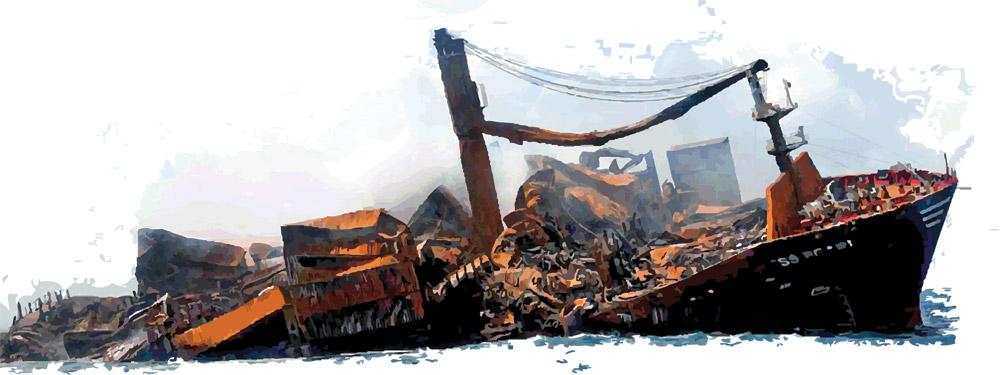Reply To:
Name - Reply Comment

AG Department maintains stoic silence about litigation in Singapore
Continuous monitoring in progress to establish whether it is linked to disaster
Fish samples checked for possible accumulation of heavy metals
Sri Lanka seeks multibillion in damages
By Kelum Bandara
Chemical and physical parameters of recent water samples collected from the sea close to the MV X-Press Pearl disaster site have changed, triggering concerns whether it is a direct result of the incident, a top official said yesterday.
Despite the enormity of the damage and the lapse of three years, Sri Lanka is yet to make headway in its litigation process against the shipping company responsible for the accident that caused extensive damage to the country’s marine environment.
The National Aquatic Resources Research and Development Agency (NARA) conducts regular monitoring of the water quality and analyses fish samples for details to be submitted in reports to be sent to the Attorney General’s Department through the Marine Environment Protection Authority (MEPA) for litigation purposes in Singapore against the shipping company responsible for the disaster.
MV X-Press Pearl, a container ship carrying hazardous chemicals caught fire off its coast on May 20, 2021. It has left an environmental disaster that Sri Lanka will likely have to live with for decades.
For days it stood burning off the Sri Lanka coast, plumes of thick dark smoke that could be seen from miles away. The X-Press Pearl has now fallen silent, lying half sunken off the coast of Sri Lanka, its hull resting on the shallow ocean bed.
A NARA official who wished to remain anonymous told Daily Mirror that the water quality in samples collected from 14 designated sites in the sea where the accident occurred had changed with the onset of southwest monsoon rain.
“Debris from the damaged ship rests on the ocean bed when the sea is calm. With the onset of monsoon, the sea churns out debris. This might be the cause for the change in chemical and physical parameters of water. We keep monitoring the water quality to establish whether it is due to the disaster or not,” the official said.
However, he said fish samples are also analyzed for possible accumulation of heavy metals.
“Currently, heavy metals in fish samples are found within permissible limits. However, accumulation of heavy metals in fish is a long process. It may take even more than a decade for heavy metals to accumulate above permissible levels,” he said.
Also, the NARA is monitoring coral habitats for possible impact.
Sri Lanka has initiated litigation against the shipping company in Singapore.
The MEPA has estimated the damage caused by the disaster to be US $ 6. 4 billion. An international panel of experts has been appointed to evaluate findings by the MEPA. The Attorney General’s Department is handling the process sharing little or no information about the current status of litigation.